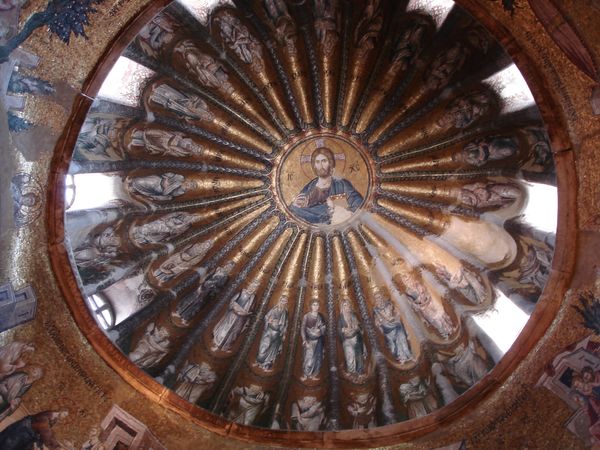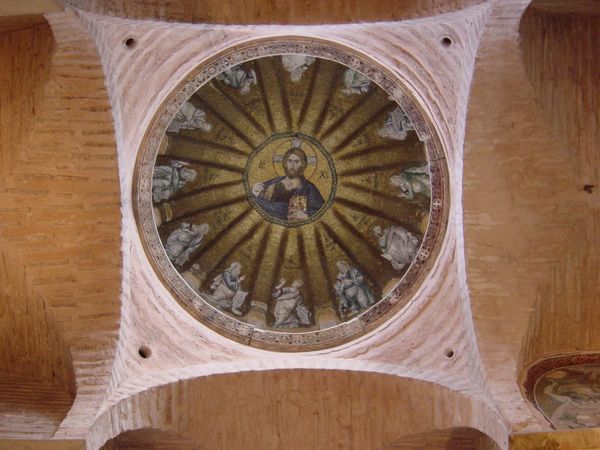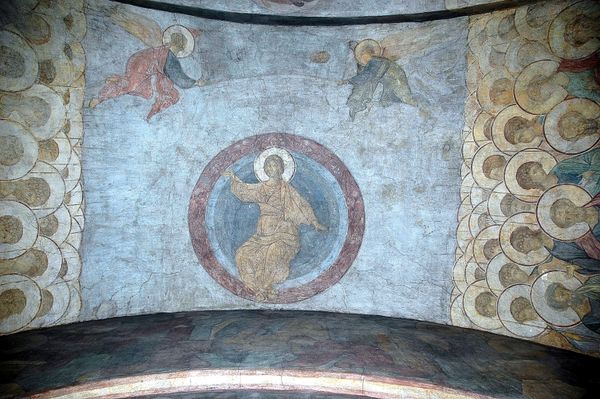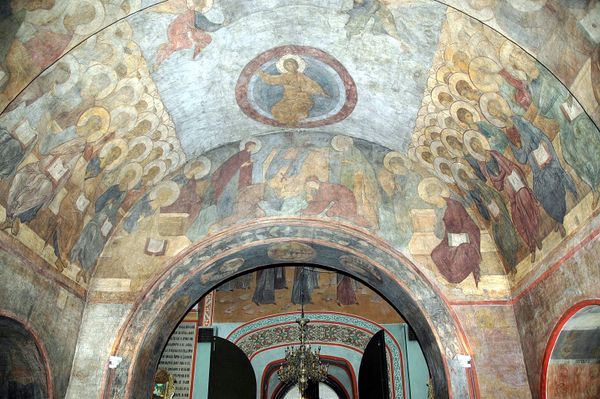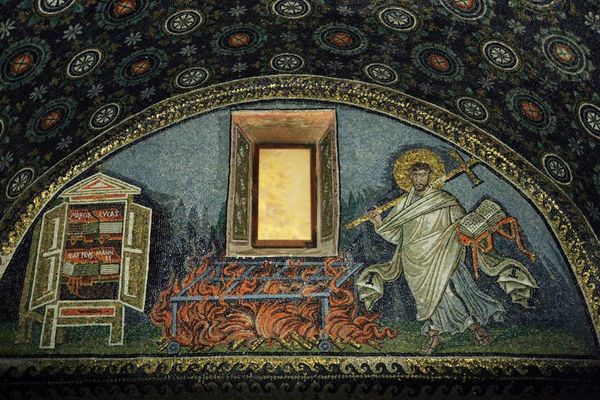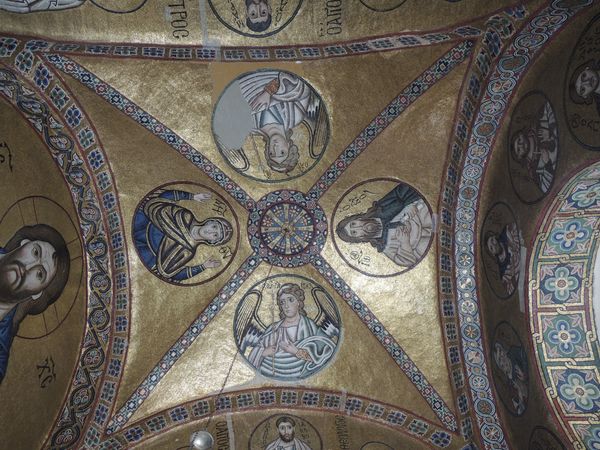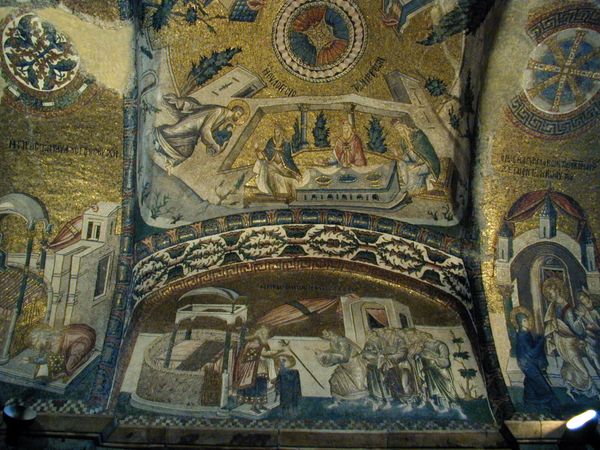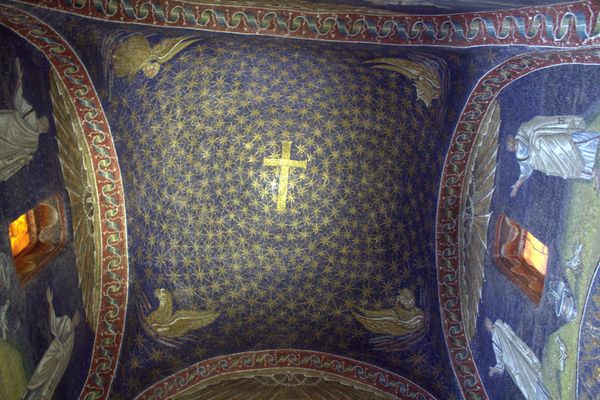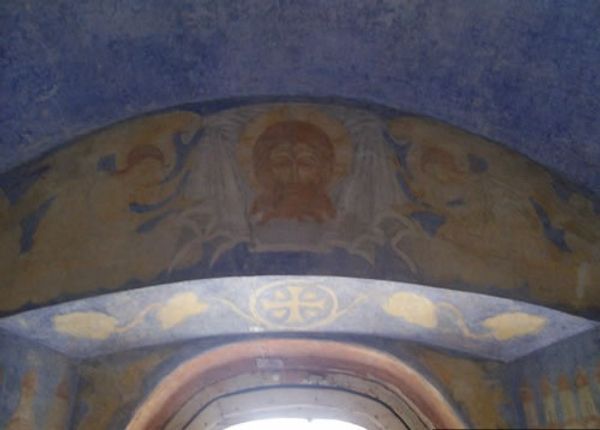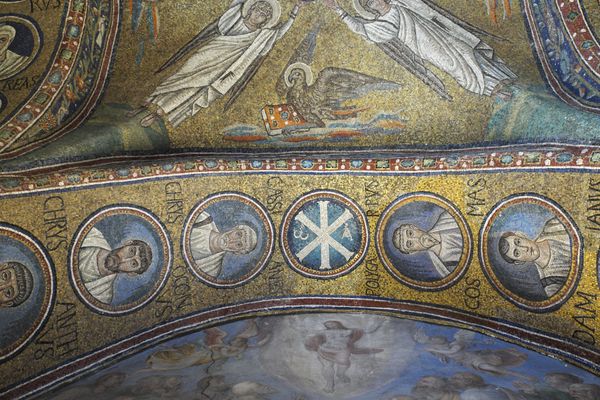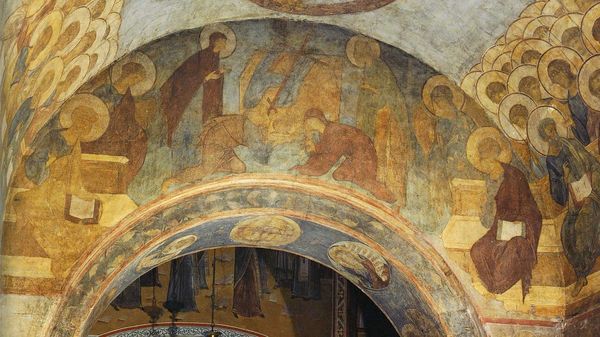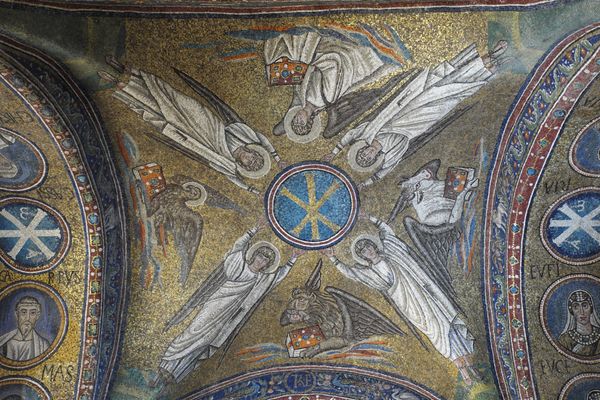
mosaic, tempera, architecture
#
mosaic
#
byzantine-art
#
medieval
#
tempera
#
historic architecture
#
traditional architecture
#
architecture
Copyright: Public domain
Here, in Istanbul's Chora Church, we encounter a Byzantine mosaic titled "Genealogy of Mary," an anonymous work crafted between approximately 330 and 1453 AD. The mosaic's composition immediately draws the eye to the center, where Mary is depicted with radiating lines that span outward, creating a visual echo of a halo. The color palette employs deep blues and rich golds, typical of Byzantine art, imbuing the work with a sense of divine solemnity. The use of tesserae allows for a play of light and texture, enhancing the dimensionality of the scene. Structurally, the composition serves a clear purpose: to emphasize Mary's central role, both in Christian theology and in the narrative of human salvation. Her placement at the apex of the dome signifies her elevated status. Semiotically, the gold signifies not only wealth but also the sacred and otherworldly, contrasting with the human figures arrayed around her. The mosaic thus constructs a structured visual narrative that reinforces established religious meanings. This piece exists not as a static relic but as a dynamic site where historical artistic techniques intersect with profound theological themes.
Comments
No comments
Be the first to comment and join the conversation on the ultimate creative platform.
